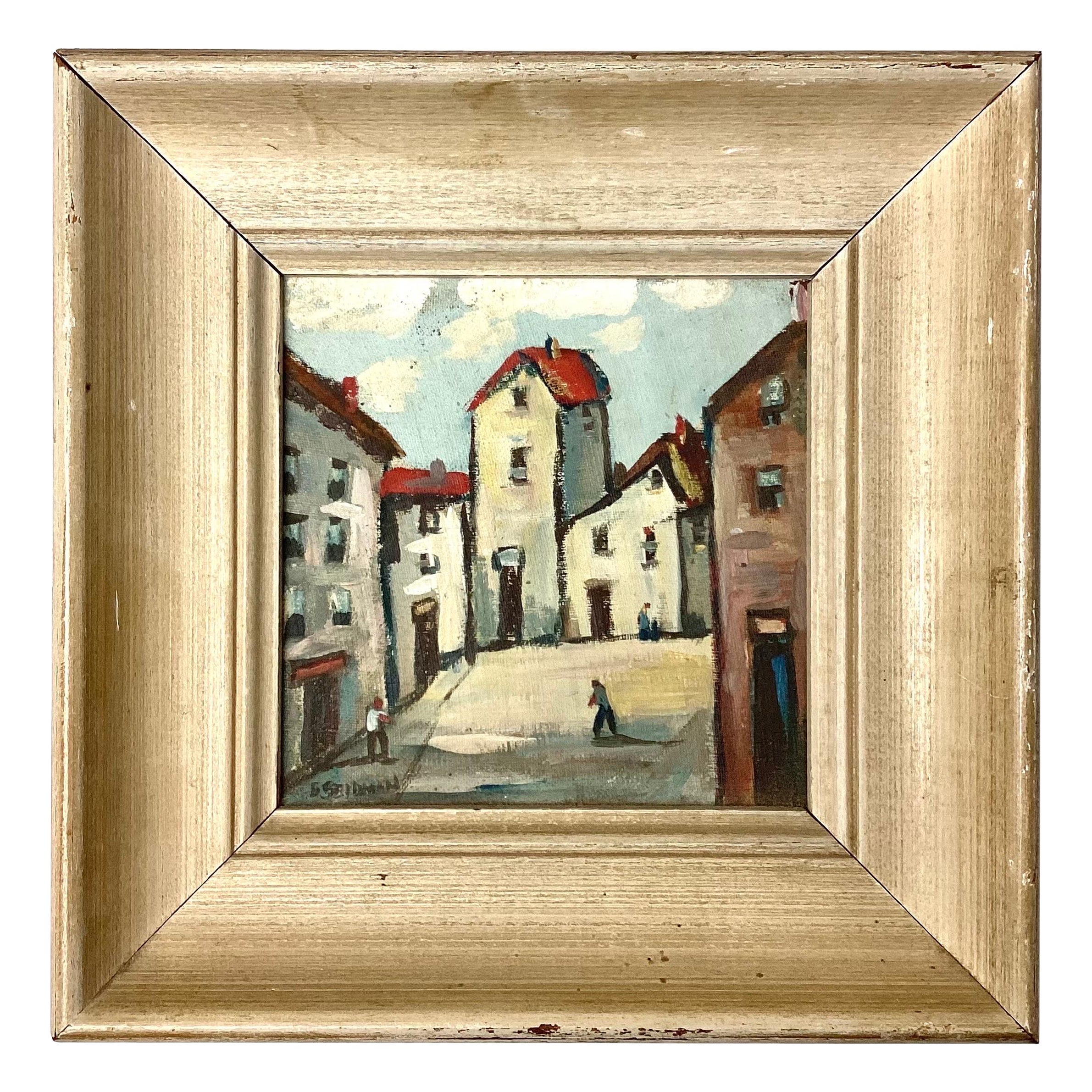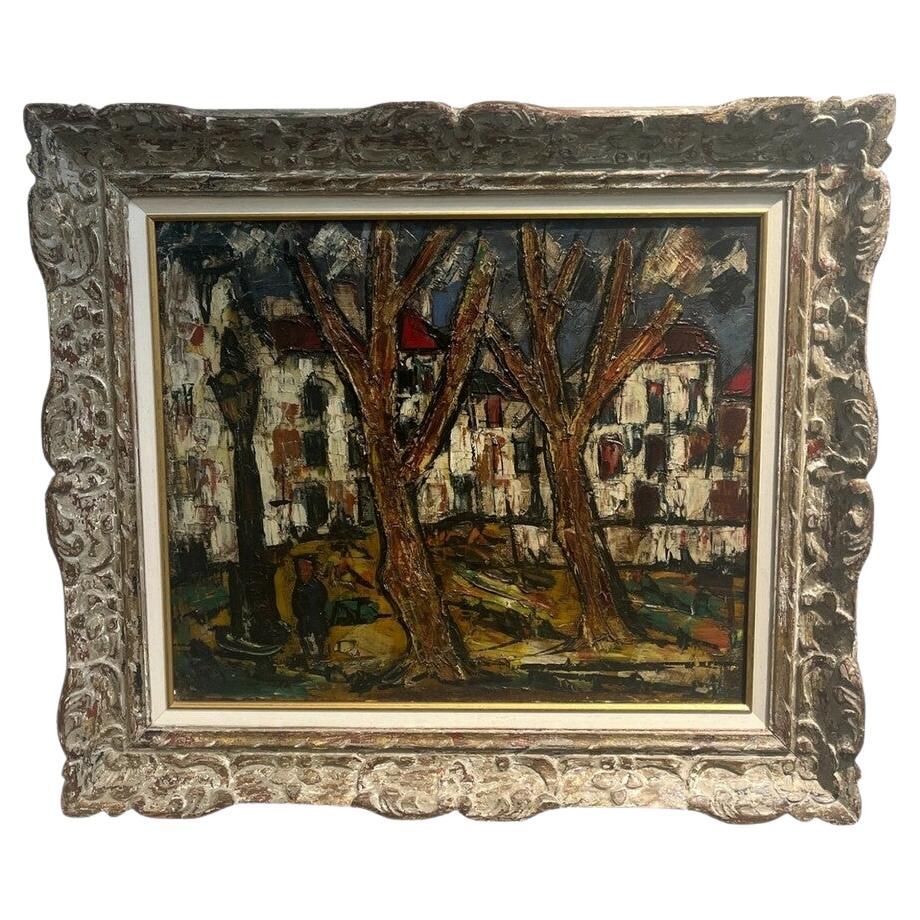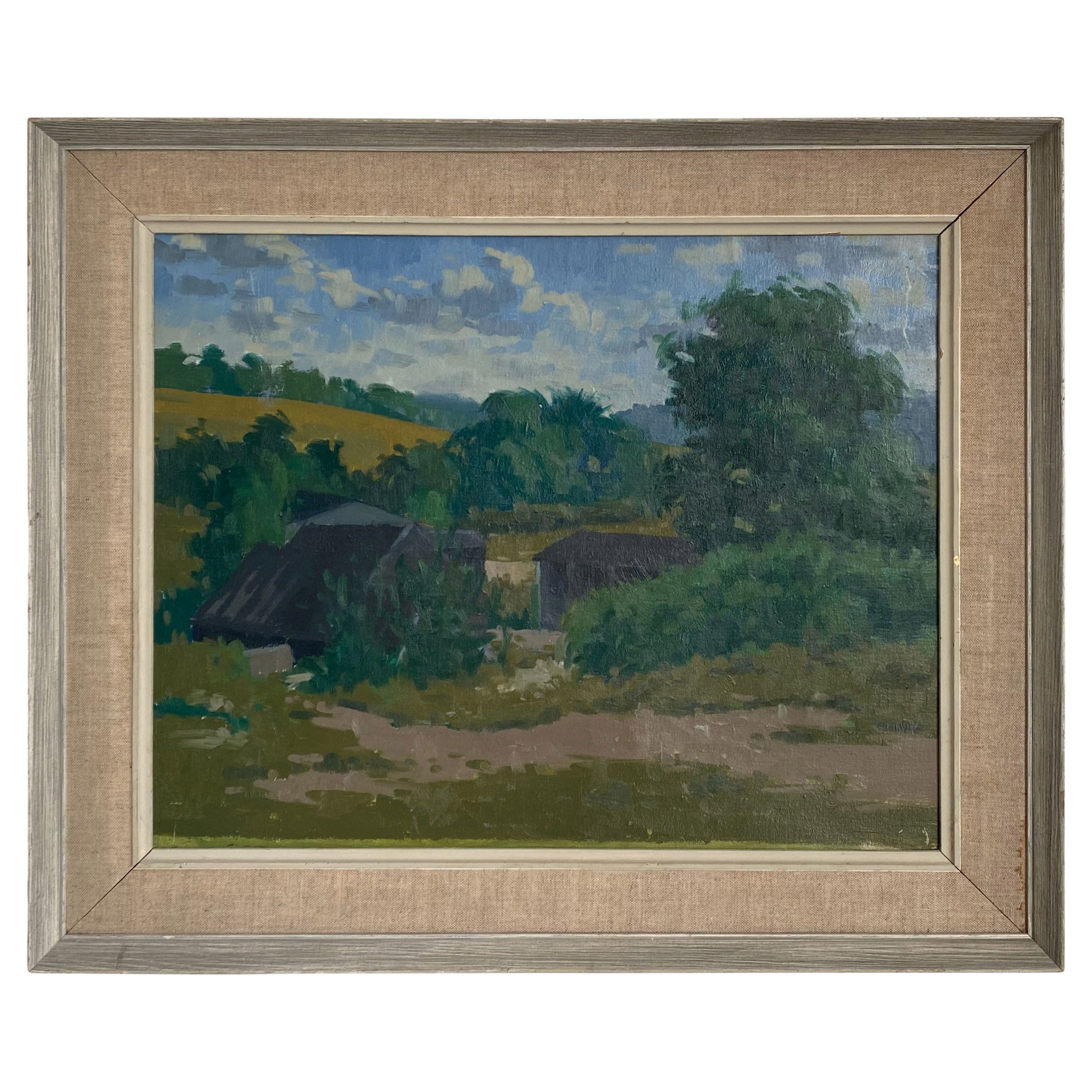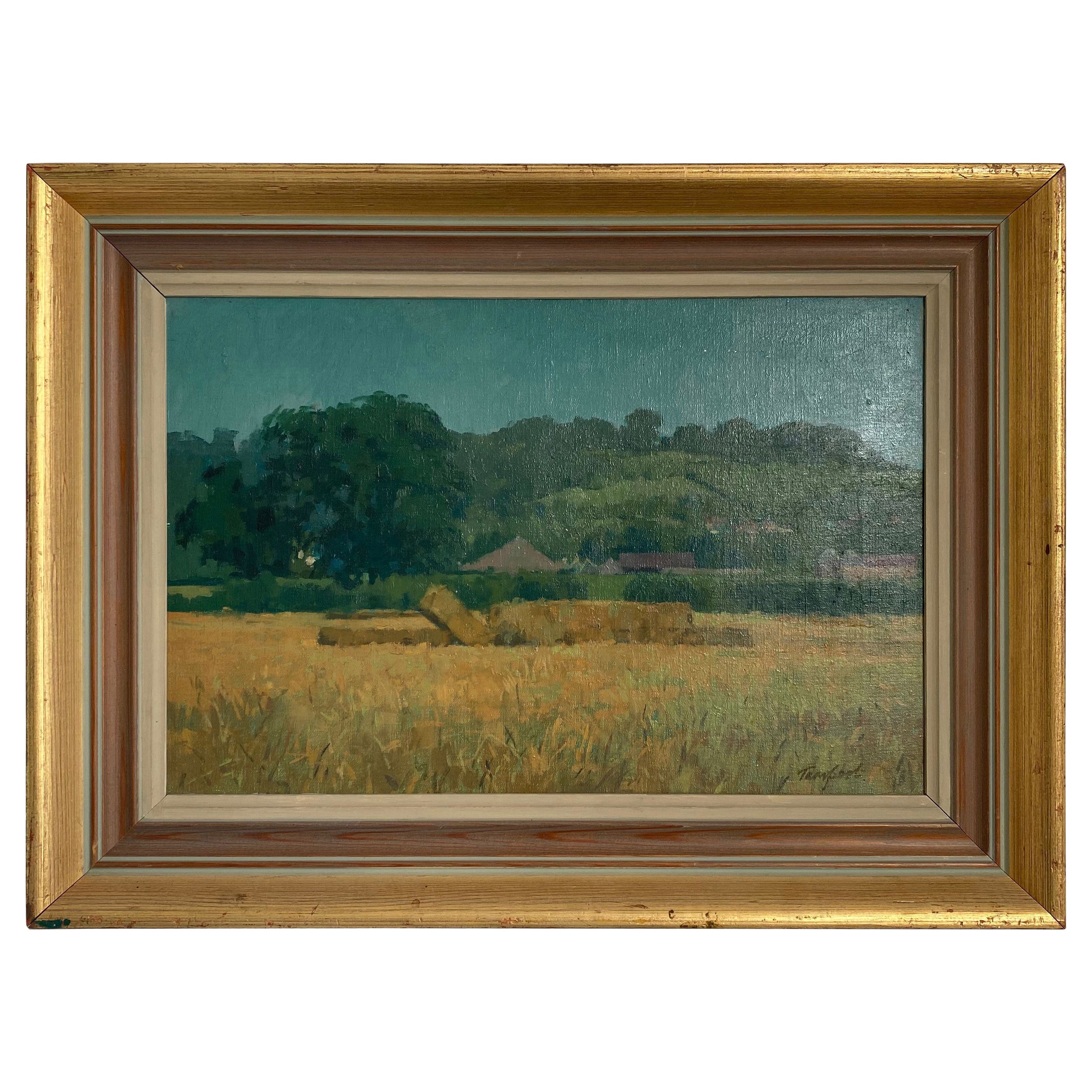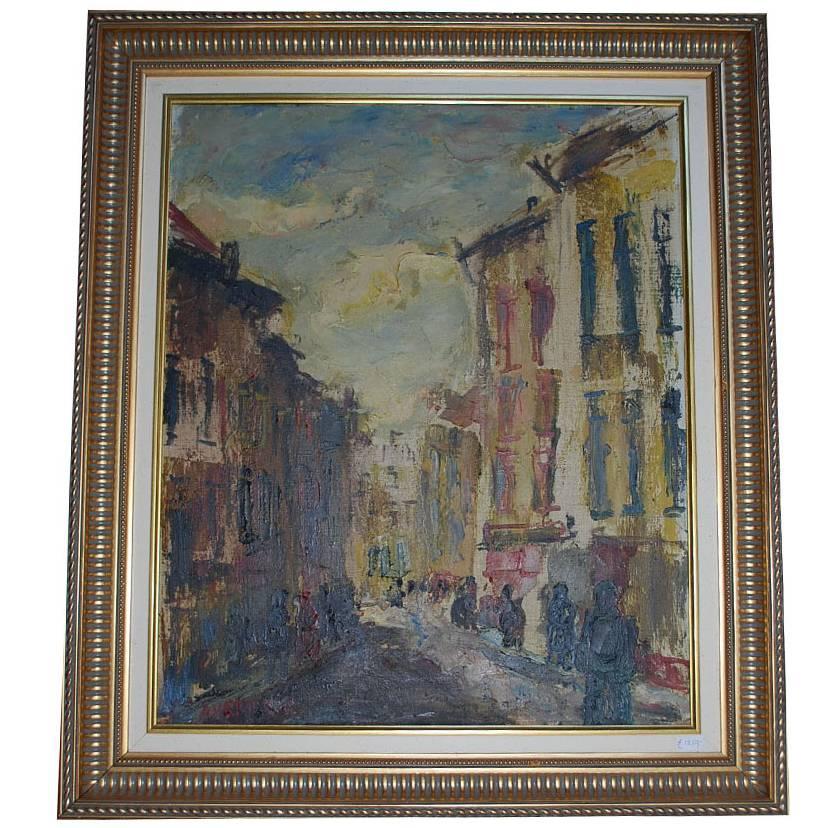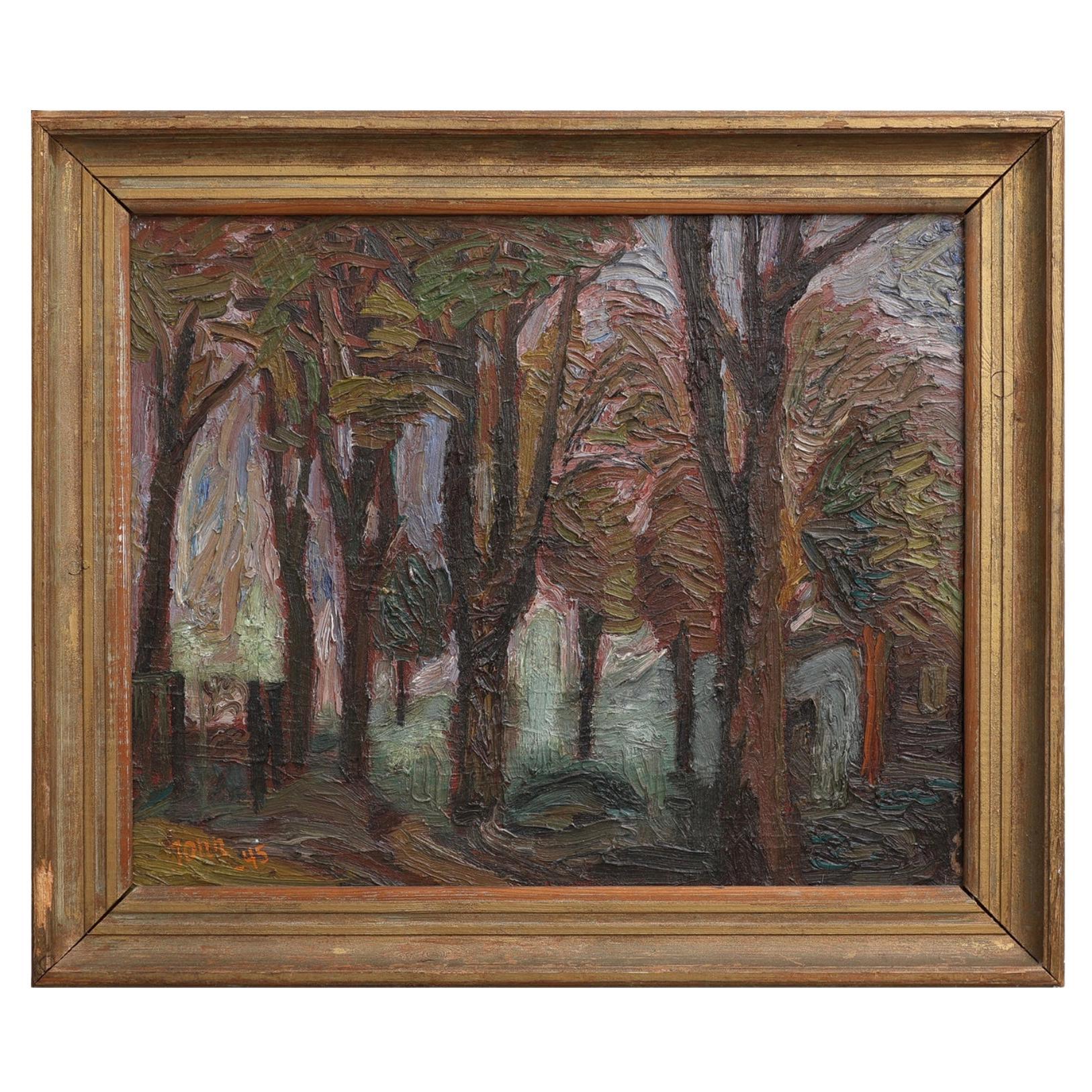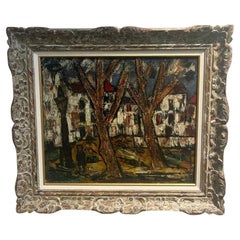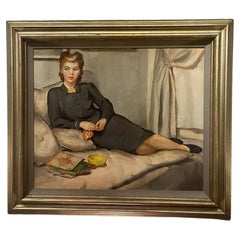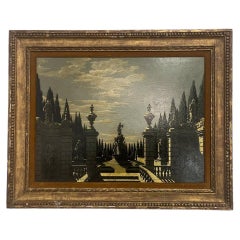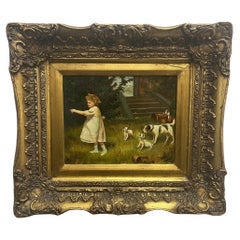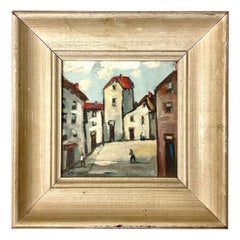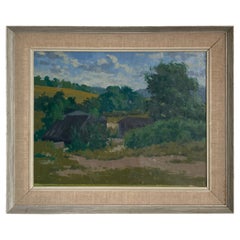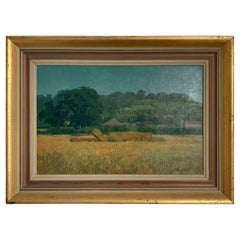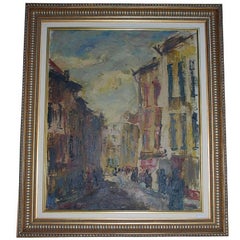Items Similar to Julian Petrie Oil on Canvas “Lancaster Road”
Want more images or videos?
Request additional images or videos from the seller
1 of 6
Julian Petrie Oil on Canvas “Lancaster Road”
$650
£491.32
€564.61
CA$905.12
A$1,006.91
CHF 527.83
MX$12,304.19
NOK 6,721.32
SEK 6,327.19
DKK 4,214.62
Shipping
Retrieving quote...The 1stDibs Promise:
Authenticity Guarantee,
Money-Back Guarantee,
24-Hour Cancellation
About the Item
Julian Petrie Oil on Canvas “Lancaster Road” in nice gilt frame,
The most I could find as far as his bio is that he's originally from the UK but has a gallery in Austin TX now.
- Dimensions:Height: 16 in (40.64 cm)Width: 18 in (45.72 cm)Depth: 1.5 in (3.81 cm)
- Style:Mid-Century Modern (Of the Period)
- Materials and Techniques:
- Place of Origin:
- Period:
- Date of Manufacture:1900's
- Condition:Wear consistent with age and use. Could use light cleaning, no damage or odors.
- Seller Location:Houston, TX
- Reference Number:Seller: 6-522 NOC1stDibs: LU6642242010652
About the Seller
5.0
Gold Seller
Premium sellers maintaining a 4.3+ rating and 24-hour response times
Established in 2009
1stDibs seller since 2022
75 sales on 1stDibs
Typical response time: <1 hour
- ShippingRetrieving quote...Shipping from: Houston, TX
- Return Policy
Authenticity Guarantee
In the unlikely event there’s an issue with an item’s authenticity, contact us within 1 year for a full refund. DetailsMoney-Back Guarantee
If your item is not as described, is damaged in transit, or does not arrive, contact us within 7 days for a full refund. Details24-Hour Cancellation
You have a 24-hour grace period in which to reconsider your purchase, with no questions asked.Vetted Professional Sellers
Our world-class sellers must adhere to strict standards for service and quality, maintaining the integrity of our listings.Price-Match Guarantee
If you find that a seller listed the same item for a lower price elsewhere, we’ll match it.Trusted Global Delivery
Our best-in-class carrier network provides specialized shipping options worldwide, including custom delivery.More From This Seller
View All20th Century Oil on Canvas by Henry Maurice D'Anty
Located in Houston, TX
20th Century Oil on Canvas by Henry Maurice D'Anty (1910-1998)
Signed in lower left corner
Category
Mid-20th Century French Expressionist Paintings
Materials
Canvas, Wood, Paint
Oil on Board by Sandy Sutherland
Located in Houston, TX
Oil on Board by Sandy Sutherland. this late 60's early 70's portrait of a woman, possibly a stewardess is a unique example of using oil paint and having the appearance of a watercolo...
Category
Mid-20th Century American Mid-Century Modern Paintings
Materials
Masonite, Paint
Charles Rain Oil on Panel "Italian Garden" 1960
Located in Houston, TX
Charles Rain Oil on Panel "Italian Garden" 1960
Biography
Charles Whedon Rain was born in 1911 in Knoxville, Tennessee.[2] He grew up in Lincoln, Nebraska...
Category
Mid-20th Century American Mid-Century Modern Paintings
Materials
Masonite, Paint
$7,196 Sale Price
20% Off
Signed Oil on Panel by N. Henry Bingham
Located in Houston, TX
Signed Oil on Panel by N. Henry Bingham depicting a young girl with her dogs
American artist born in 1939
Category
20th Century American American Classical Paintings
Materials
Wood, Paint
$1,595 / set
Midcentury French Oil on Canvas Entitled "Port of Nile"
Located in Houston, TX
Midcentury French oil on canvas entitled "Port of Nile" in a new frame.
Category
Vintage 1960s French Mid-Century Modern Paintings
Materials
Canvas, Wood, Paint
Elsa Desportes Village Scene Oil on Board
Located in Houston, TX
Elsa Desportes Village Scene Oil on Board. Scene is from a village most likely in the 30's or 40's. She painted in Southern France, Morocco and Algeria. She died in 1990
Category
Mid-20th Century French Mid-Century Modern Paintings
Materials
Wood, Paint
You May Also Like
Mid Century George Seidman Oil Painting on Board
Located in Lambertville, NJ
Mid century George Seidman oil painting on board. This is a nice small piece. Frame size 7 3/4 by 7 3/4" image size 5" by 5". Nice original frame.
Category
Mid-20th Century American Mid-Century Modern Paintings
Materials
Paint
Oil Painting by Victor Tempest
Located in London, London
Oil painting
By Victor Tempest
On canvas
Framed
Mid/late 20th century.
Category
Late 20th Century British Mid-Century Modern Paintings
Materials
Canvas
Oil Painting by Victor Tempest
Located in London, London
Oil painting
By Victor Tempest
On canvas
Gold frame
Mid/late 20th century.
Category
Late 20th Century British Mid-Century Modern Paintings
Materials
Canvas
20th Century Expressionism Oil on Canvas by Alphonse Vermeir
Located in Casteren, NL
20th century oil on canvas painted and signed by the Belgium artist Alphonse Vermeir (1905-1994.)
Depicting a Belgium townview.
Originates Belgium, dating, circa 1940.
Category
Vintage 1940s Belgian Paintings
Materials
Canvas
$910 Sale Price
39% Off
1940s Swedish oil on panel by Gunnar Jonn (1904-1963)
Located in London, GB
striking oil painting from the 40s of a forest scene in strong impasto strokes and bold colour tones.
Simply framed of the period by well known Swedish artist Gunnar John, who studi...
Category
Vintage 1940s Swedish Mid-Century Modern Paintings
Materials
Paint
Mid-Century Framed Oil Painting on Canvas
Located in Dallas, TX
This peaceful antique framed oil painting on canvas depicts a lovely pastoral scene complemented by the original frame. Artist van Gaal has employed a post-impressionist technique wi...
Category
Vintage 1960s Belgian Mid-Century Modern Paintings
Materials
Canvas
More Ways To Browse
Thai Bronze Head
Tibetan Head
Trumpet And Horn
Used Kitchen Cabinets Hutches Display Cabinets
Victorian Pot Planter
Victorian Sea Shell
Vintage Beer Glass
Vintage Burl Wood Chest
Vintage Ceramic Peacock
Vintage Hand Painted Fruit Plates
Vintage Italy Calendar
Vintage Kitchen Bench
Vintage Pedestal Dish
Vintage Water Globes
Vintage Wicker Chest
Vintage Wire Outdoor Chairs
Wall Mounted Sword
Washing Clothes
